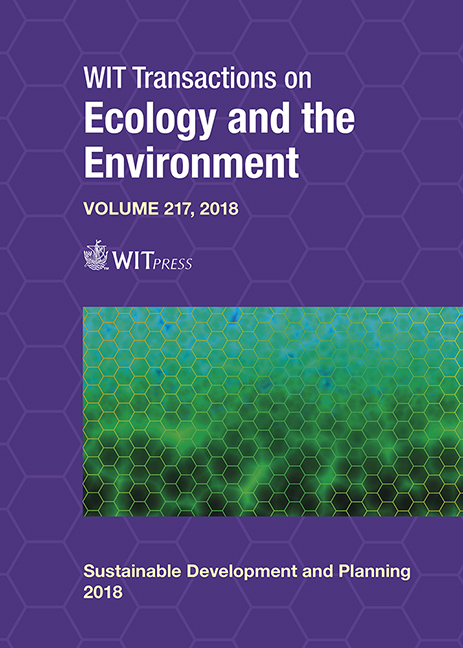EVOLUTION OF VERTICAL FARMS AND THE DEVELOPMENT OF A SIMULATION METHODOLOGY
Price
Free (open access)
Transaction
Volume
217
Pages
12
Page Range
975 - 986
Published
2018
Size
507 kb
Paper DOI
10.2495/SDP180821
Copyright
WIT Press
Author(s)
DIANA WALDRON
Abstract
Agricultural practices are at a significant cross roads: continuous population growth, increasing evidence of food shortage and reduced land availability are just a few of the problems highlighting the need to improve existing agricultural methods. Moreover, recurrent emerging episodes of catastrophic natural phenomena occurring across the world, such as global warming, increased natural disasters and depletion of natural resources are pushing the bar even higher, in terms of the urgent need to find viable solutions to tackle food security. The research community is under pressure to find solutions towards the above issues in tandem with the protection of the natural environment and the need to improve quality of life. In parallel, the architectural challenges are outlined by the same realities, because cities will continue to grow and it is imperative to find solutions to minimise the impact of urban development on the planet. Two key areas have been identified in this research, they are considered to have the potential to simultaneously help to mitigate the problems mentioned above: 1) Improved design of buildings and cities to encourage urban biodiversity, i.e. better urban design and architectural practices. 2) Enhanced methods to produce, store and distribute food, i.e. improved rural and urban agriculture: produce, storage and distribution. Scrutiny into these topics lead this investigation into vertical farming and the exploration on how it can be improved. A simulation methodology is under development, aiming to reproduce the potential capabilities of vertical farms, exploring their wider viability and their integration into existing and new buildings. This paper follows the development of this methodology, its current capabilities and the future directions of this ongoing investigation.
Keywords
vertical farming, computer simulation, plants and architecture, sustainable urban agriculture





